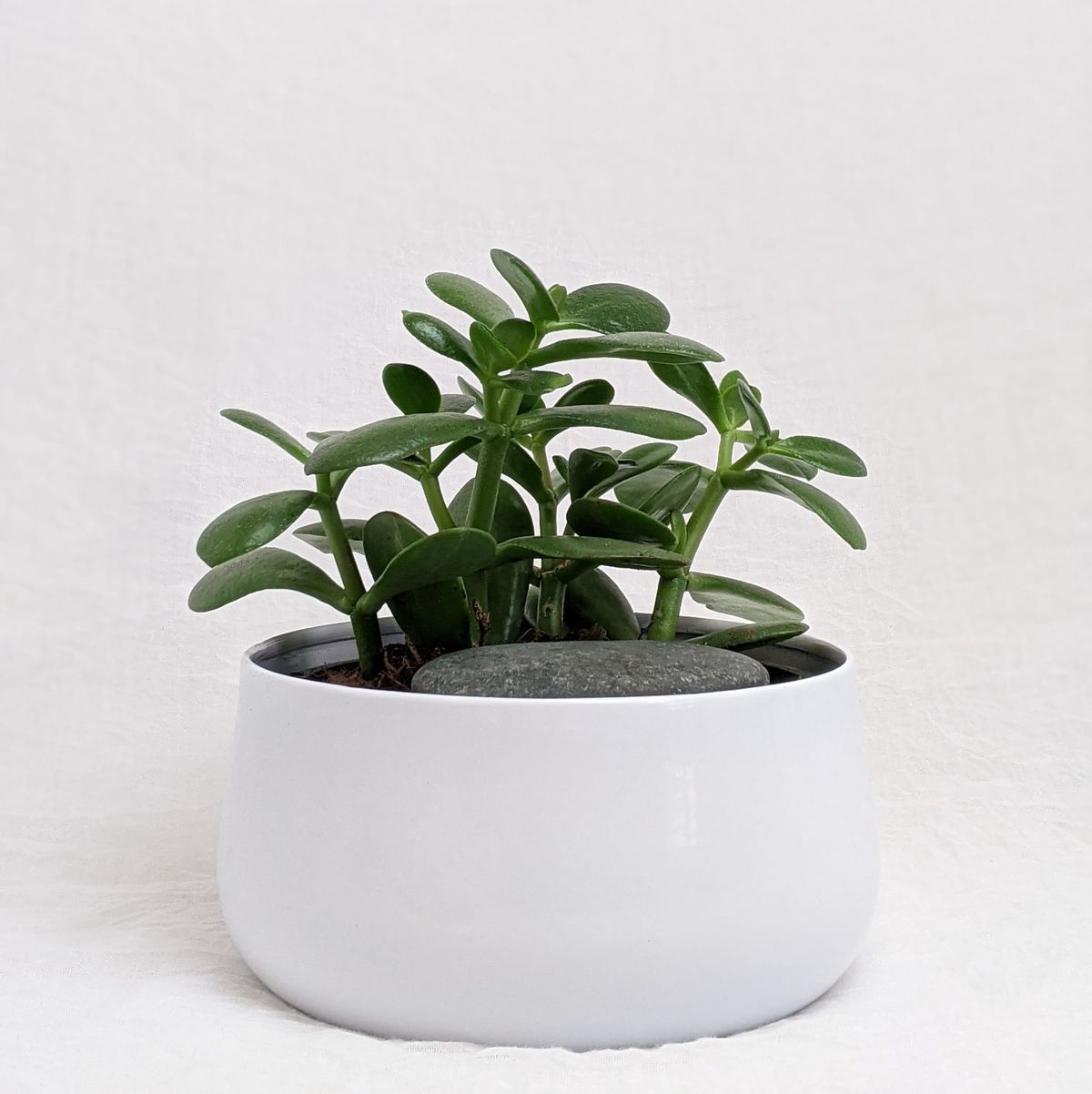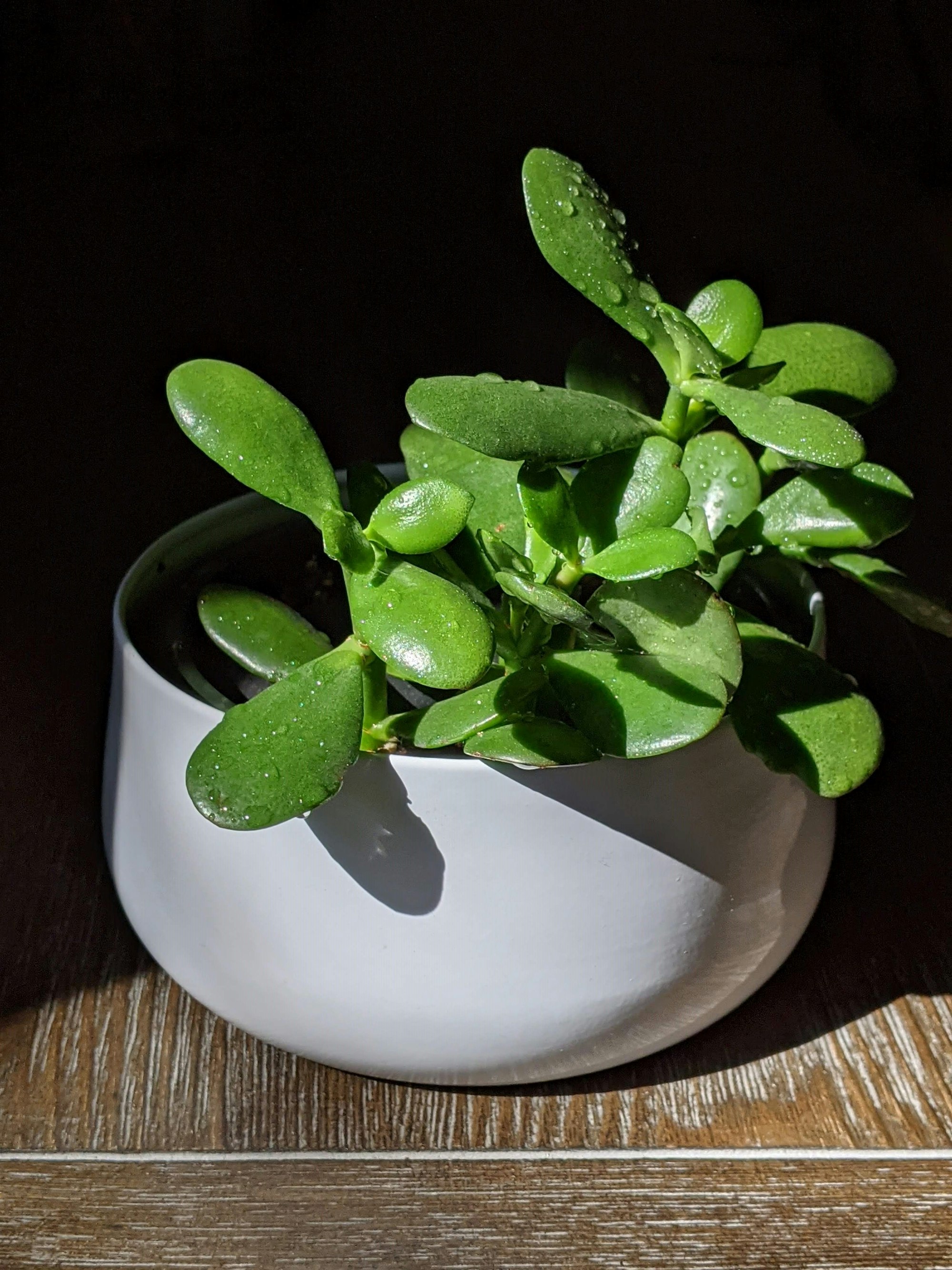How to Grow Jade Plant
Jade plants, originating from South Africa, are versatile and popular houseplants known for their beautiful, fleshy leaves and ease of care.

Table of Contents
These succulents require minimal maintenance, making them an excellent choice for novice and experienced gardeners.
As a slow-growing plant that can thrive indoors and outdoors, jade plants add a touch of elegance to any setting.
A key to successfully growing jade is ensuring the ideal environment, which means well-draining soil, sufficient light, and proper watering.
Providing the right balance of these factors will ensure your jade plant develops strong roots, sports lustrous foliage, and may even produce delicate white blooms.
Armed with a few essential tips, you can easily cultivate and maintain this stunning plant.
Key Takeaways
- Jade plants are popular, low-maintenance succulents originating from South Africa.
- Proper soil, light, and watering are crucial for successful growth.
- These plants can thrive indoors and outdoors and may produce delicate white blooms.

About Jade Plant
Jade plants (Crassula ovata), or money plants, are popular succulent houseplants from South Africa.
They belong to the Crassulaceae family and are easy-to-grow perennials known for their thick, fleshy leaves and tree-like appearance.
There are several varieties and types of jade plants, each with distinct features and growth habits.
As a plant enthusiast, these low-maintenance plants are suitable for beginner and experienced gardeners, thriving indoors with minimal care.
Growing Jade Plant
Select a healthy stem cutting from an existing plant to propagate a jade plant.
Use sharp, clean clippers to snip off the stem with healthy leaves.
Let the cut stem dry for about 5-7 days and form a callous before planting, as this helps prevent rotting.
Prepare a pot with a well-draining potting mix, combining equal parts of peat moss, aged compost, coarse sand, and perlite.
Optionally, add coir and crushed pumice. The ideal soil pH for jade plants is slightly acidic, around 6.0.

Place the calloused cutting in the potting mix, and water it sparingly until roots develop.
Gradually increase watering frequency as the plant establishes itself.
Provide bright, indirect light for at least 4-6 hours a day, ideally at a south or west-facing window, and avoid extremes in temperature to promote healthy growth.

Caring for Jade Plant
Sun and Temperature
Jade plants thrive in bright, indirect sunlight, so place them near a south-facing window.
They can tolerate temperatures between 65-75°F during the day and 50-55°F at night.
Water and Humidity
Water your jade plant thoroughly, allowing the soil to dry between waterings.
Reduce watering during the dormant season (fall and winter) to avoid overwatering and rot.
Soil
Use a well-draining succulent potting mix, or create your own by combining organic matter like peat moss or coir with heavier materials such as sand and perlite.
Slightly acidic soil with a pH of around 6.0 is preferred for jade plants.

Fertilizer
Fertilize your jade plant with a balanced or cactus/succulent-specific fertilizer during the growing season (spring and summer).
Always follow the manufacturer's instructions for proper ratios and application frequency.
Repotting
Repot your jade plant when it becomes root-bound, usually every 2-3 years.
Be careful when handling the plant to prevent damage, and use fresh succulent potting mix when repotting for optimal growth.
Pruning and Propagation
Prune your jade plant to maintain its shape and encourage bushier growth.
For propagation, use stem or leaf cuttings and allow the ends to dry before placing them in moist soil mixed with rooting hormone.

Troubleshooting Plant Problems
Growing Problems
When caring for a jade plant, some common issues include yellow leaves and leaf drops, often caused by overwatering or underwatering.
To avoid root rot, ensure proper drainage in the plant's soil and maintain a watering schedule that keeps the soil moist but not soggy.
Pests and Diseases
Jade plants can fall prey to pests like mealybugs, scale, and spider mites.
Check for signs of infestation, such as white fluff on leaves or small, crawling insects, and treat with an insecticidal soap or neem oil.
To prevent future infestations, maintain a clean growing environment and regularly monitor your plant's health.
Companion Planting
When growing jade plants, it's essential to consider companion plants, as some may be toxic to humans or pets while others can help repel pests.

Safe companions for jade plants include other succulents such as aloe vera, echeveria, or haworthia.
Avoid planting jade with known toxic species to keep your environment safe and healthy.
Conclusion
Growing a jade plant can be a rewarding experience as long as you provide the proper care.
Ensure your jade plant receives at least four hours of direct sunlight daily and has well-draining soil, such as a succulent potting mix.
Water your jade plant frequently during spring and summer for optimal growth, keeping the soil moist but never soggy. In winter, reduce watering to about once per month.
With these care guidelines, your jade plant will thrive, creating a beautiful and resilient addition to your indoor spaces.
Frequently Asked Questions
What is the optimal watering frequency for a jade plant?
Jade plants require different watering schedules depending on the season.
In the summer, water more frequently, while in the winter, you may only need to water once every two to three weeks.
Do jade plants require direct sunlight to grow?
Yes, jade plants need sunlight to grow. Ensure your plant gets at least four hours of direct sunlight daily, or place it in a sunny spot for the entire day.
What methods can speed up jade plant growth?
Jade plants typically grow slowly, but you can encourage faster growth by providing optimal conditions such as ample sunlight, well-draining soil, and proper watering frequency.
How can a jade plant be pruned for better growth?
To prune a jade plant, remove any dead or damaged leaves and trim overcrowded or weak branches.
This promotes healthy growth and helps maintain your plant's desired shape.
Indoors or outdoors: What is the best setting for a jade plant?
Jade plants can thrive both indoors and outdoors.
If growing outdoors, choose an area with 4 to 6 hours of sunlight and well-draining soil. However, if you live in a colder climate, growing jade plants indoors is best.
What are some essential care tips for jade plant cultivation?
To maintain a healthy jade plant, ensure proper watering, adequate sunlight, and a suitable soil mix with a neutral to slightly acidic pH (around 6.0 to 7.0).
Regularly inspect your plant for pests and remove any dead or damaged foliage.



